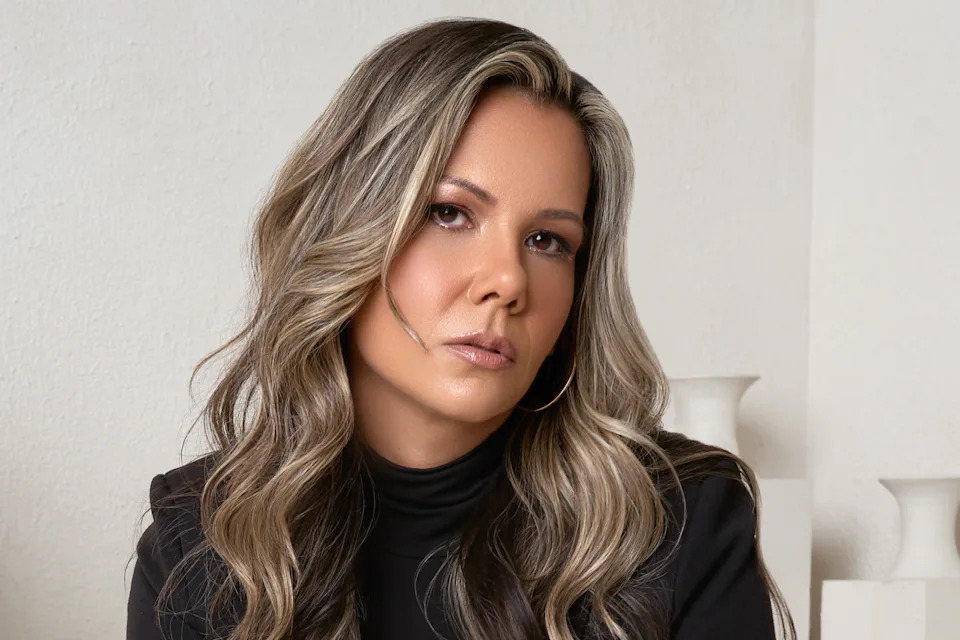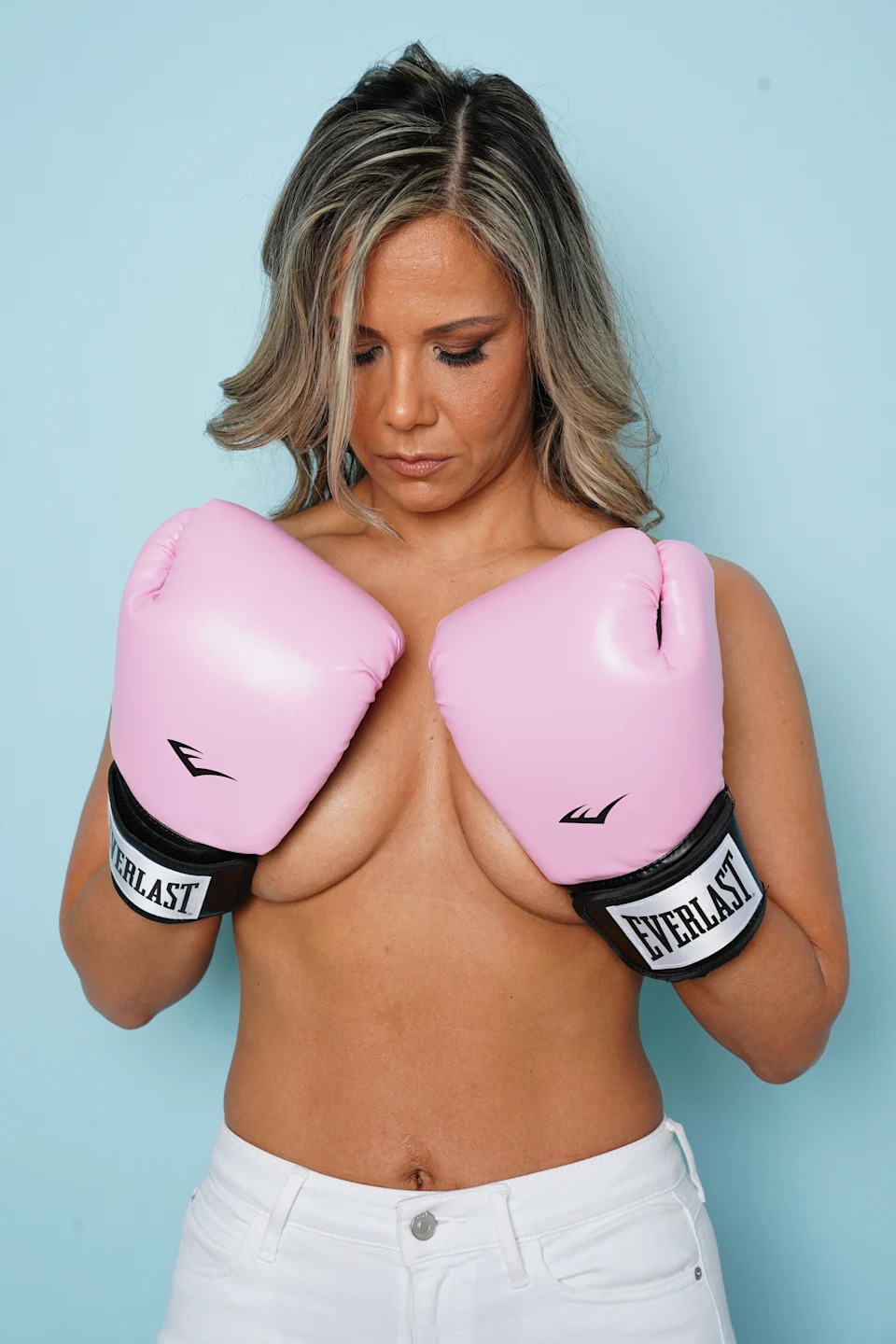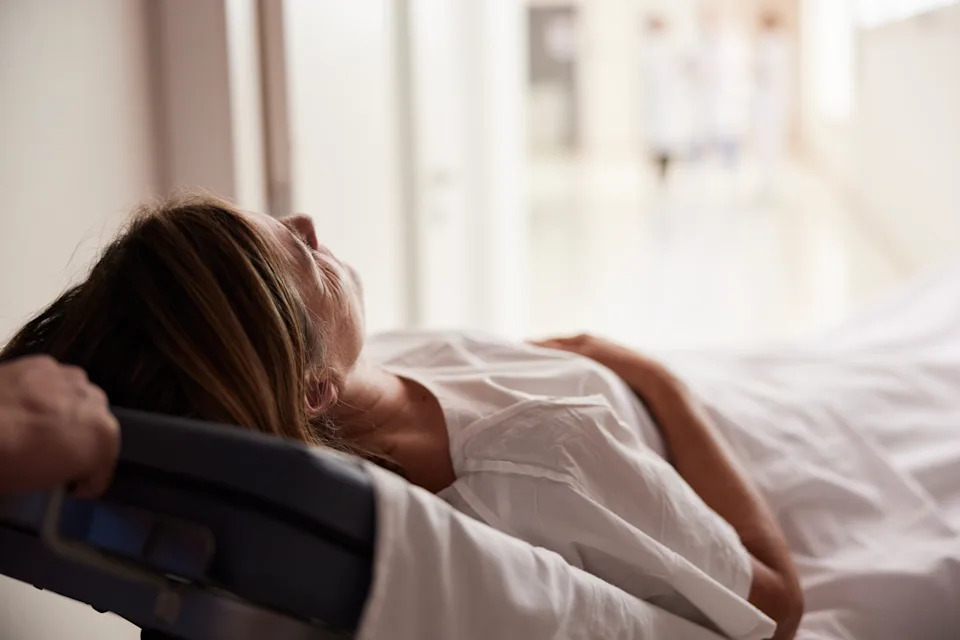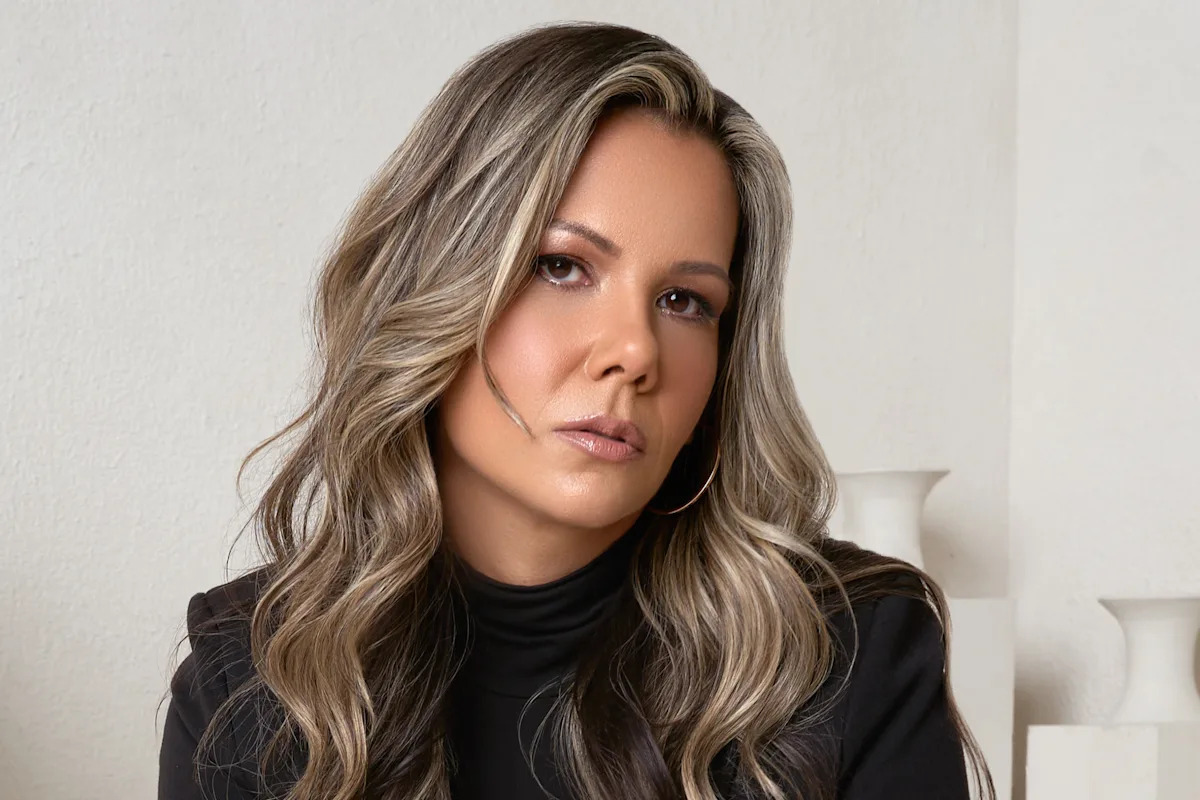
For Breast Reconstruction Awareness Day on Oct. 15, Tanya Persaud is opening up about her experience after she was diagnosed with breast cancer and underwent a mastectomy. (Photo by Oktober Kreative)
If Tanya Persaud has her way, no other woman across Canada will have to navigate the rocky terrain after a breast cancer diagnosis like she did. During her experience, she was unaware of all the options she had — and said her choices were even labelled “emotional” by one of her doctors.
It all began when Persaud, who lives in the Greater Toronto Area, thought her lymph nodes “felt really massive” in 2022. She had a tumour removed, while five other potentially precancerous lumps remained in her other breast.
Fast forward to one Friday in 2024, when Persaud learned her mother had breast cancer. The following Monday, she recalled having her first “science lesson” with her mom’s surgeon, and then sought out help from her own family doctor amid concerns of a genetic risk. Two days later, Persaud received her own breast cancer diagnosis.
Soon, she’d battle cancer alongside her mother, while also fighting for her own breast reconstruction surgery — an option she didn’t know she had at first, and one she told Yahoo Canada she believes all women should have access to.
This article is for informational purposes only and is not a substitute for professional medical advice, diagnosis or treatment. Contact a qualified medical professional before engaging in any physical activity, or making any changes to your diet, medication or lifestyle.
‘It was me, myself and I against the system’
“The one thing that the nurse had told me at the hospital when I originally saw the surgeon, she said: ‘Advocate for yourself.’ And I did not know what that meant,” Persaud recalled, explaining that her doctors planned for her to have radiation after her tumour was removed — and they allegedly never gave her any other option. For many early-stage patients, chemotherapy also isn’t always required for treatment.
But Persaud was hesitant about committing to radiation therapy due to possible side effects, including skin problems like changes to texture and sun sensitivity, along with potential heart problems. According to the Canadian Cancer Society, other side effects of radiation therapy could include fatigue, hair loss, loss of appetite, nausea and vomiting. Moreover, her mother had opted for radiation therapy for her own diagnosis and began explaining the side effects she started experiencing.
The first question that you ask is, who’s dealing with the outcome? Is it the doctor, or is it me?
Tanya Persaud
Persaud would go on to build her own definition of self-advocacy as she researched her diagnosis and various treatment options. “I would advise every woman to read every report, ask questions like a five-year-old curious child and talk to other women,” Persaud said, explaining it was a friend who first told her breast reconstruction was a possibility.

Persaud had a photoshoot to commemorate and celebrate her breasts pre-surgery. The boxing gloves fit thematically: “I had to fight tooth and nail to get to where I am to get the reconstruction that I did,” she shared. (Photo by Oktober Kreative)
Armed with info from a network of friends and fellow cancer fighters alongside all that research, Persaud became the self-advocate she needed to be. When asked what she’d suggest to others in her position, she suggested standing up for yourself.
“The first question that you ask is, who’s dealing with the outcome? Is it the doctor, or is it me? Because at the end of the day, I have four daughters,” she explained. “Their faces were in front of me for every decision that I made.”
Dr. Waqqas Jalil, a plastic surgeon at FORM Face and Body in Toronto, explained there are three main avenues available to women in Persaud’s position. This includes radiation, removal of the breasts (going flat, in layman’s terms) or breast reconstruction surgery — something that he’s a leading expert in.
“The important thing is just for everybody to have their choice, and their choice can involve doing reconstruction, and their choice can involve not doing it,” Jalil shared. “But they definitely need to have the ability to make that choice, which is the important thing.”
I knew mentally and emotionally, I did not want to walk around with these breasts anymore. … I felt like my breasts had betrayed me.
Tanya Persaud
Persaud recalled visiting her oncologist after her cancer diagnosis and him allegedly telling her, “I’m here to sell you your life insurance policy.” She asked for a mastectomy, and he reportedly told her “good luck” in finding a surgeon who’d do the procedure. She then asked for breast reconstruction, and the oncologist allegedly said, “This is the best your breasts are ever going to look.”
A week later, she said she had a follow-up appointment with a surgeon, where she again asked for a mastectomy. Persaud added that her active lifestyle and love of exercise partially influenced her decision to skip radiation, since it’d prevent her from going to the gym. Plus, mastectomy was an option her mother had also been offered before she chose radiation therapy for herself.
“‘OK,’ this surgeon reportedly said. ‘I think you’re making an emotional decision. I think you’re making an emotional decision, and that’s what treatment is for. It’s going to tell your left breast to behave itself,’’’ Persaud recalled being told. “Behave itself. Because I said, ‘What about the five other masses in my left breast?’”
Persaud added that part of her original care team allegedly missed her diagnosis after they failed to capture the tissue that housed the cancer. “That’s when I knew it was me, myself and I against the system,” she said.

Self-advocating as a patient involves asking for what you need, ensuring you’re being respected and discussing your needs. (Photo via Getty Images)
It was Jalil, as a matter of fact, who wrote one presentation that Persaud read. That resulted in her asking for him by name to reconstruct her breasts after a mastectomy removed her cancerous ones. For Persaud, the choice was difficult — but not complicated.
“I knew mentally and emotionally, I did not want to walk around with these breasts anymore,” Persaud shared. “As hard as it was to make that decision, I knew. I felt like my breasts had betrayed me. A part of my body that helped nurture life, which is my children, was now betraying me. So it was a decision rooted in survival.”
How breast reconstruction is changing in Canada
In Canada, Jalil said the most common form of breast reconstruction is implant-based, but some people can have breasts reconstructed from their own tissue from other parts of the body. Tissue-based reconstructions take longer to heal, about a month to a month and a half, compared to the two to three weeks for implant-based reconstruction.
“A very popular technique that has been arriving in the last five to 10 years is doing the reconstruction above the muscle, or what we call pre-pec. That’s been an evolving technique that’s found some really big traction,” Jalil shared, adding that sub-pectoral reconstruction — using an under-the-muscle technique that Persaud opted for — has also been rising in popularity.
“The implant reconstruction field: I would find it to be fascinating, because so many things change,” Jalil added. “Even in 10 years, the technique has changed once or twice.”
Every October, Jalil and his colleague, Dr. Ron Somogyi, host a meeting for surgeons across the country for Breast Reconstruction Awareness Day, which falls on the third Wednesday of the month. The event brings together experts who conduct mastectomies across Canada and local plastic surgeons to discuss breast reconstruction, advice and advancements in the field. The event is also open to current patients who may be considering surgery, as well as former patients who seek community or want to offer help.
In many cases, a patient has numerous experts involved in their cancer journey. “It can be quite overwhelming to have that many people in the circle of care of someone,” Jalil explained. “So it’s also nice to try to round out the team and figure out different ways to work better alongside each other.”
Surgery was life-changing in many ways
Persaud says that during the recovery period after her breast reconstruction, sleeping on her stomach was a no-go. Moreover, people can’t always squeeze quite as tight as before when they hug her.
“If you bend over, sometimes they feel a little like rocks,” she added. “I did think about the nerves, because you don’t have all your nerve endings. You don’t get the nipple stimulation.”
But for her, reconstruction was absolutely worth it — and not just because, in her mid-40s, it allowed her to keep a feeling of femininity. Persaud also shared how natural her breasts feel and look, noting that if a stranger were to meet her, they likely wouldn’t even know she had implants.
It came with a cost mentally and emotionally, and it came with me giving up a part of myself that I’m never going to see again.
Tanya Persaud
“It’s not a boob job and it’s not a ‘get over it,’ because it came with a cost mentally and emotionally,” she said. “And it came with me giving up a part of myself that I’m never going to see again.”

Persaud shared that her breast reconstruction surgery was completely worth it — but it did come with a mental and emotional toll. (Photo by Oktober Kreative)
Jalil echoed that sentiment, saying reconstruction can offer people a boost to their quality of life.
“So many people can kind of confuse reconstruction with vanity, but I think that’s the wrong way to think about it,” he said. “I think it’s more of thinking about how a woman can fit into clothes, the sense of them still feeling like themselves, like they haven’t lost a body part, the sense of femininity, the sense of still feeling whole.”
These days, Persaud has shared her journey on social media to help others. She’s also soon planning to become a patient partner, someone who shares their lived experiences as part of a medical research or project team, aiming to improve treatment for future patients. Moreover, she’s planning to attend Breast Reconstruction Awareness Day events, ready to talk to women navigating their own diagnosis about her choice so they can make theirs: “If this happened to me, there’s other women it’s happening to.”
“I actually found my voice through this journey,” Persaud added. “Now, when I talk to other women [who have cancer, what I say is] is: ‘You deal with the outcome, find your voice, because if you don’t, you’re just another thought. You’re just another check mark: ‘Next patient, next file and let’s keep moving on.’”
Let us know what you think by commenting below and tweeting @YahooStyleCA! Follow us on Twitter and Instagram.

